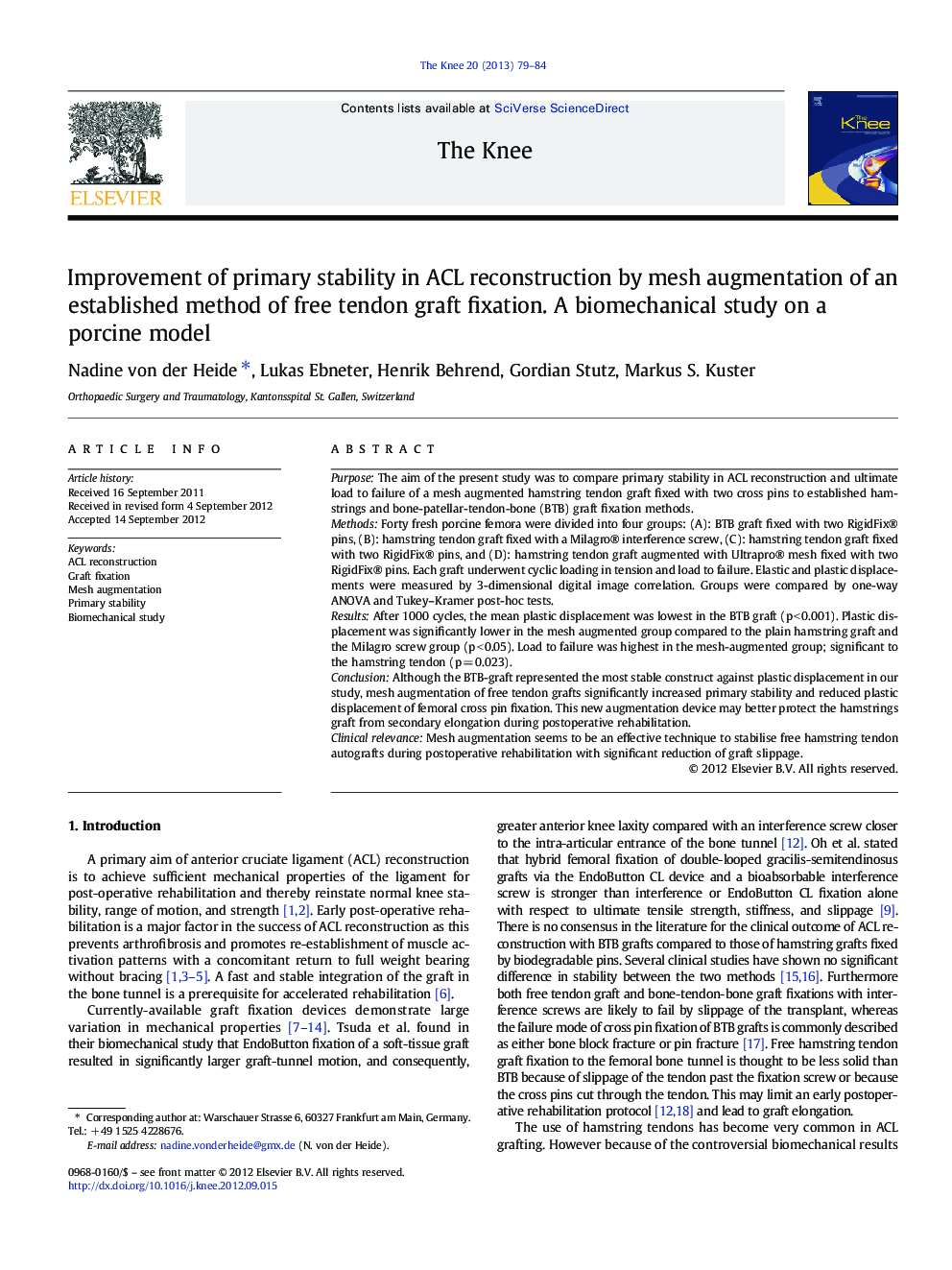| Article ID | Journal | Published Year | Pages | File Type |
|---|---|---|---|---|
| 4077648 | The Knee | 2013 | 6 Pages |
PurposeThe aim of the present study was to compare primary stability in ACL reconstruction and ultimate load to failure of a mesh augmented hamstring tendon graft fixed with two cross pins to established hamstrings and bone-patellar-tendon-bone (BTB) graft fixation methods.MethodsForty fresh porcine femora were divided into four groups: (A): BTB graft fixed with two RigidFix® pins, (B): hamstring tendon graft fixed with a Milagro® interference screw, (C): hamstring tendon graft fixed with two RigidFix® pins, and (D): hamstring tendon graft augmented with Ultrapro® mesh fixed with two RigidFix® pins. Each graft underwent cyclic loading in tension and load to failure. Elastic and plastic displacements were measured by 3-dimensional digital image correlation. Groups were compared by one-way ANOVA and Tukey–Kramer post-hoc tests.ResultsAfter 1000 cycles, the mean plastic displacement was lowest in the BTB graft (p < 0.001). Plastic displacement was significantly lower in the mesh augmented group compared to the plain hamstring graft and the Milagro screw group (p < 0.05). Load to failure was highest in the mesh-augmented group; significant to the hamstring tendon (p = 0.023).ConclusionAlthough the BTB-graft represented the most stable construct against plastic displacement in our study, mesh augmentation of free tendon grafts significantly increased primary stability and reduced plastic displacement of femoral cross pin fixation. This new augmentation device may better protect the hamstrings graft from secondary elongation during postoperative rehabilitation.Clinical relevanceMesh augmentation seems to be an effective technique to stabilise free hamstring tendon autografts during postoperative rehabilitation with significant reduction of graft slippage.
